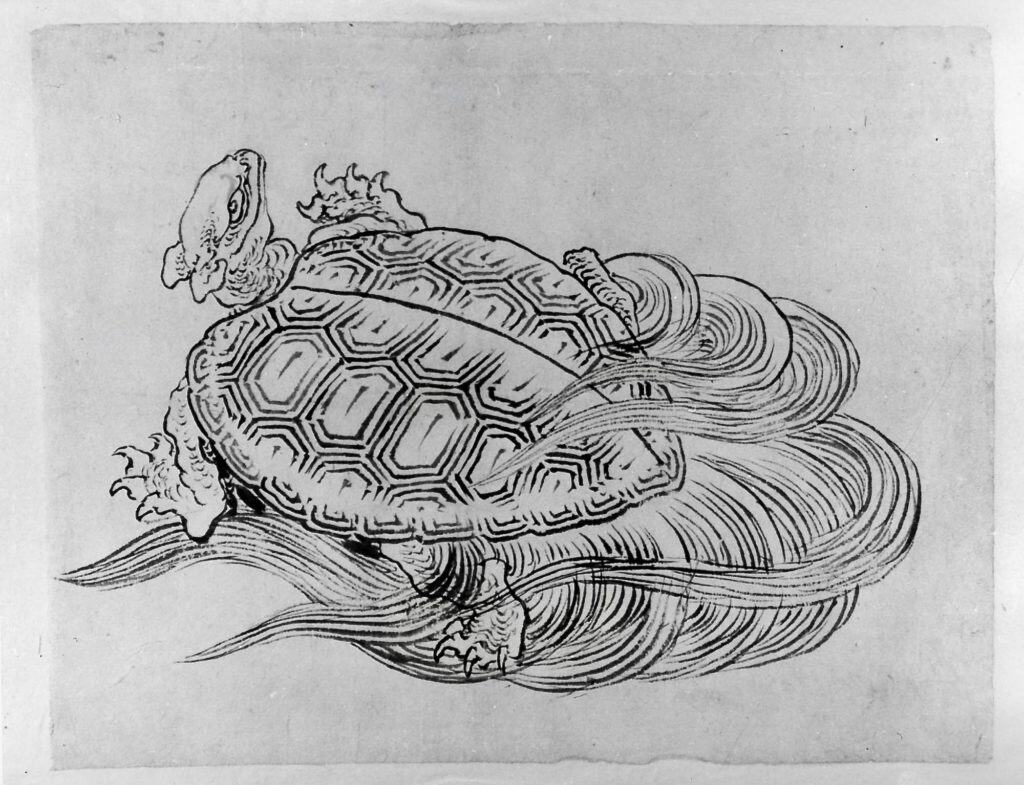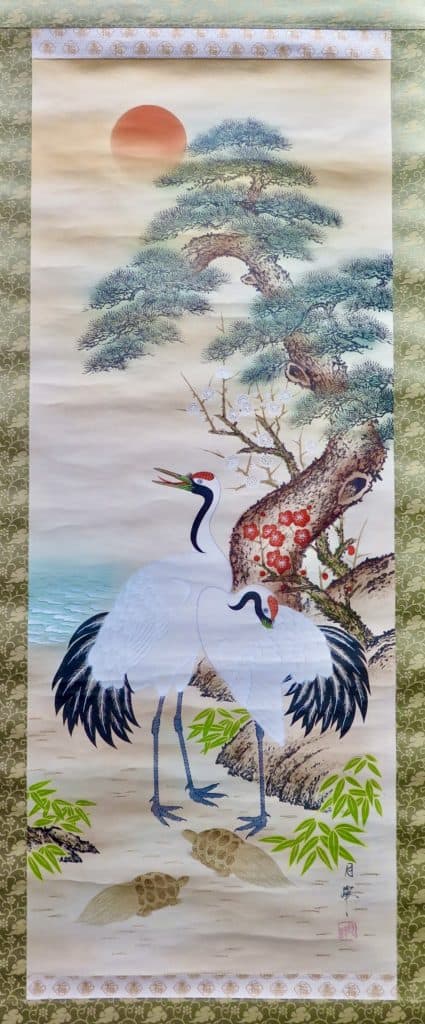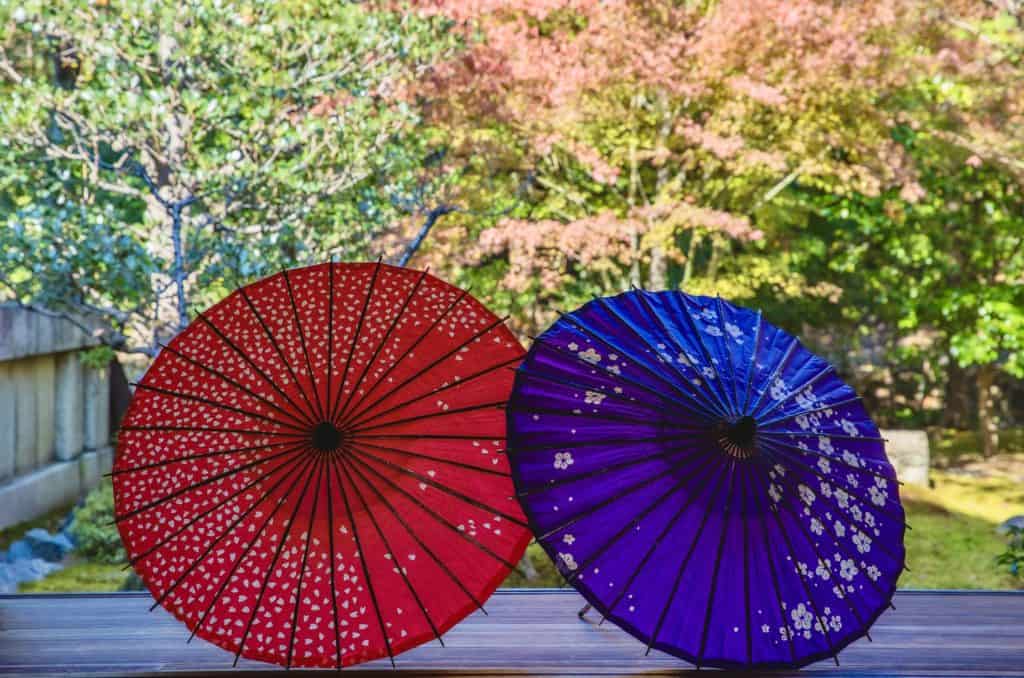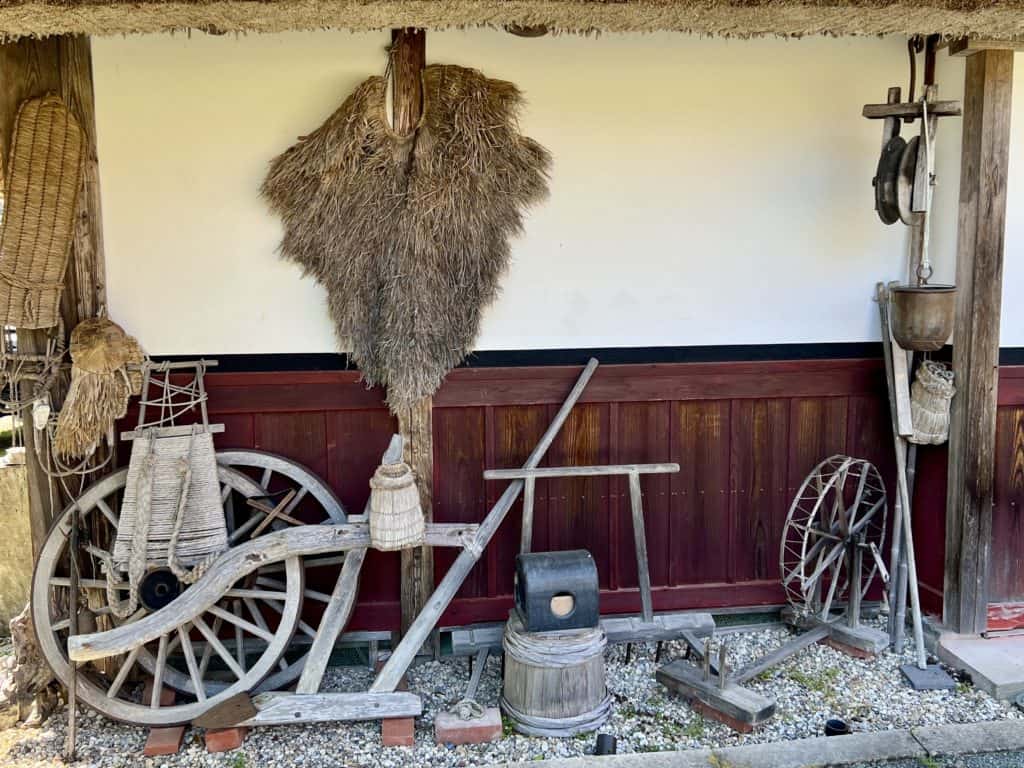Why turtles have hairy tails in East Asian art

A dear friend who was born in 1919, survived World War II and lived to the ripe old age of 101, shared many pearls of wisdom with me. Among those were several Japanese proverbs.
Like this one:
亀の甲より年の功
Kame no kō yori toshi no kō. “Experience is the mother of wisdom.” That’s easy to understand. Yet its literal meaning is “Wisdom from age is better than the shell of a tortoise.”
Huh?
What does wisdom have to do with tortoise shells?
This proverb expresses its meaning by using wordplay, a favorite in Japanese. Two homonyms are used — kō 甲, meaning turtle shell, and kō 功, meaning accumulated experience. The proverb also alludes to the symbolic imagery of the turtle as representing long life.
Turtles, cranes, and pine trees

Another proverb states:
鶴は千年亀は万年
Tsuru wa sen-nen, kame wa man-nen. “A crane lives a thousand years, a turtle, ten thousand.”
The turtle, along with the crane and the pine tree, is one of three frequently used images to convey the wish for longevity. It is usually pictured with a long hairy tail and is called a minogame 蓑亀, meaning a turtle wearing a straw raincoat.
But what is a straw raincoat?
Allow me a brief digression.

Stiff oil-paper umbrellas, or rather, parasols, came to Japan from China during the 9th century and were used as sunshades. The folding mechanism was invented in the late 16th century, and folding parasols became popular during the Edo Era (1603–1867).
Straw raincoats and kasa hats — conical umbrella hats commonly seen in East Asian art and still worn today — had traditionally been used as protection against rain.
We had to leave it to the Europeans to invent rain umbrellas.

Back to turtles.
Why do they have hairy tails?
Over many years spent in water, bluish-green algae attaches and thrives on the turtle’s carapace, growing long and luxurious, and giving the appearance of a hairy tail. The years it takes for the algae to lengthen reveal the turtle’s long life.
I confess I was puzzled about these hairy turtles for years. I’m happy to have finally learned how this whimsical image came to represent longevity.
If you have questions about Japan or suggestions for articles, please add them in the comments. For more photos and information on Japan, follow me on instagram at: https://www.instagram.com/more_than_tokyo/




